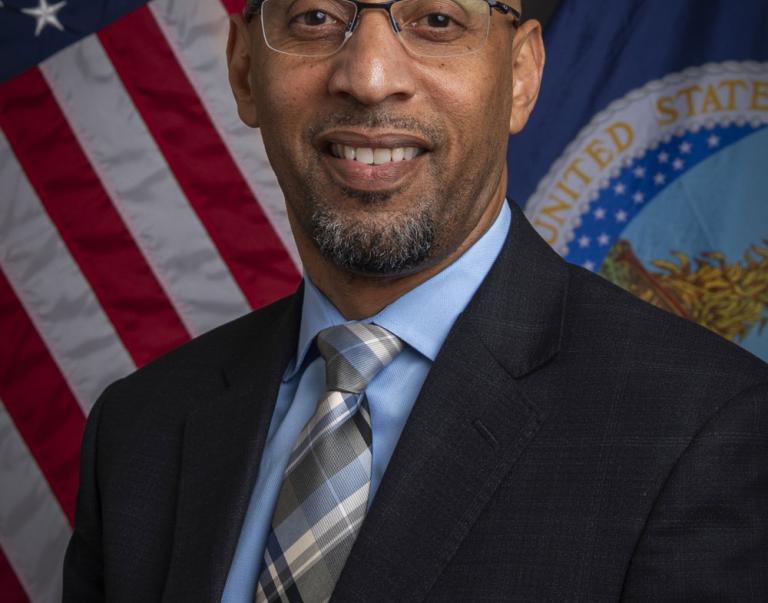(Washington D.C., February 10, 2020) – U.S. Secretary of Agriculture Sonny Perdue issued the following statement after President Donald J. Trump submitted his FY 2021 budget proposal to Congress:
“The United States is leading the world in economic growth and prosperity. President Trump’s pro-growth policies like tax cuts, common-sense deregulation, and new trade deals have increased confidence in the economy and put hard earned money back into the pockets of Americans,” said Secretary Perdue. “President Trump’s budget continues to reign in an overgrown Federal government with fiscally responsible cuts in spending. USDA is doing its part to improve our customer service while reducing our economic and regulatory impact. We will continue to serve and deliver our programs on behalf of America’s farmers, ranchers, producers, foresters, and the food insecure with improved customer service and respect for taxpayer dollars.”
Background on the FY 2021 USDA Budget:
- Safeguards the Nation's Food Supply: The Budget includes nearly $1.1 billion to fully fund the costs necessary to support over 8,700 FSIS personnel who ensure the safety of meat, poultry, and egg products at over 6,400 processing, slaughter, and import establishments in the U.S.
- Higher Blends Infrastructure Incentive Program: Building off USDA’s $100 million investment in FY 2020, the Budget includes an additional $100 million to support grants and incentives to promote domestic ethanol and biodiesel infrastructure and consumption.
- Rural E-Connectivity: In addition to $690 million in program level for the telecommunication infrastructure program which supports communities with population of under 5,000, the Budget provides $250 million in budget authority to support broadband loans, grants and loan/grant combinations that will provide high speed broadband services to communities with population under 20,000. It also provides $30 million in budget authority for broadband grants to rural Americans who currently do not receive any broadband service.
- Nutrition Assistance: The Budget includes funding to support estimated participation levels under current law, including $68.3 billion for the Supplemental Nutrition Assistance Program (SNAP), $25 billion for Child Nutrition Programs, and $5.5 billion for the Special Supplemental Nutrition Program for Women, Infants, and Children (WIC). Participation in these nutrition assistance programs is expected to continue declining with sustained economic growth that enables families to work toward self-sufficiency.
- International Markets for U.S. Agricultural Exports: The Budget includes $200 million for the Foreign Agricultural Service to reduce trade barriers that disadvantage U.S. agricultural exports and to open new markets for U.S. farm products.
- Hemp Production: The Budget maintains funding for the Hemp Production Program, which will support new economic opportunities for U.S. farmers.
- Reducing the Risk of Wildfires: The Budget includes $4.4 billion to mitigate wildfire risk. Started in 2020 and continuing through 2027, the USDA Forest Service and the Department of the Interior will have new budget authority available, known as the “Fire Fix” when Suppression funding has been exhausted.
- Active Forest Management: The Budget includes an investment of $2 billion to improve the health and resilience of National forests, ensuring that our National forests and grasslands continue to provide clean air and water, forest and rangeland products, mineral and energy resources, quality habitat for fish and wildlife, recreational opportunities, and jobs.
- Supporting Rural Communities: The Budget supports $5.5 billion in loans for rural electric improvements, benefiting over 5 million rural residents annually by expanding the use of smart grid technologies and other security and resiliency improvements. Funding is also requested to support $1.3 billion in direct loans and $614 million in grants to improve and expand the water and waste disposal facilities in rural America. The Budget supports $2.5 billion in Community Facilities Direct Loans and $500 million in Community Facilities Guaranteed Loans for investment in critical community infrastructure, such as healthcare, safety, and educational facilities. In addition, the Budget supports $24 billion in funding for the Single-Family Housing Guaranteed Loan Program to enable approximately 160,000 families to enjoy homeownership and $230 million in multi-family guaranteed loans to support the development of more than 8,000 units for very low-, low-, and moderate-income rural residents. Finally, the Budget supports $1.5 billion in program level in Business and Industry loan guarantees, which is expected to assist 433 businesses support nearly 11,000 jobs and diversify the rural economy.
- Commodity Programs: The Budget provides $4.6 billion for commodity program payments to maintain an effective farm safety net.
- Federal Crop Insurance Program: The Budget provides $8.8 billion for the Federal crop insurance program, enough to provide crop insurance coverage for more than $100 billion in crop value.
- Farm Loans: The Budget includes $79 million to fully support the estimated $8.9 billion demand for farm loans, providing loans to an estimated 35,000 farmers and ranchers to finance operating expenses, refinance debt or acquire a farm.
- Farm Bill Conservation Programs: The Budget includes $2.3 billion for the Conservation Reserve Program to protect close to 25 million acres of environmentally sensitive cropland and grassland. In addition, $1.8 billion is included for the Environmental Quality Incentives Program, and $450 million for the Agricultural Conservation Easement Program.
- Agriculture Research, Education and Economics: The Budget includes $3.3 billion to support research to advance the competitiveness of U.S. agriculture and promote food security. This includes $1.4 billion to support core research projects of the Agricultural Research Service and $1.6 billion in discretionary funding to support extramural agricultural research, education, and extension activities of the National Institute of Food and Agriculture, including $600 million for competitive grants through the Agriculture and Food Research Initiative.
- Agricultural Pest and Disease Programs: The Budget includes $1.036 billion in discretionary funding to protect agriculture from pests and diseases, address sanitary (animal) and phytosanitary (plant) trade concerns, and enforce animal care legislation.
- National Bio and Agro-Defense Facility (NBAF): The Budget supports the continued establishment of NBAF and provides $81 million for operations and maintenance costs in FY 2021. Funding is also requested within ARS and APHIS to transition highly pathogenic animal disease work from the obsolete facilities at the Plum Island Animal Disease Center to NBAF.
#
USDA is an equal opportunity provider, employer, and lender.



